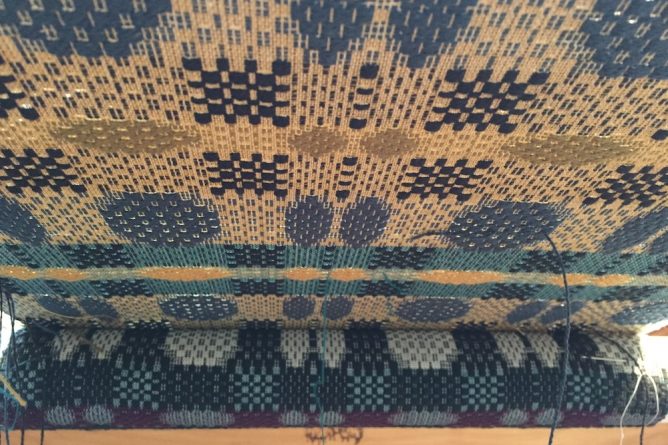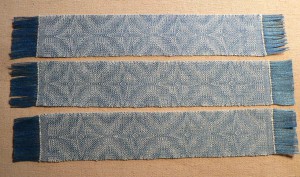Back in the fall of 2016, I was registered for a class on 18th and 19th century handwoven textiles with Marjie Thompson. Each of us in the workshop was going to set up a loom ahead of time with a specific pattern. We’d bring our looms to the workshop and, during the weekend, we would all go around and weave a sample on each person’s loom. By the end of the weekend we would have lots of samples of different patterns. I was very excited. (12/31/2023 Edited: Once in a while I get an email inquiring about this Leisey Star pattern. Here are a few links to get you connected with Marjie Thompson and her publications if you’re looking for more information. Library Thing, Complex Weavers, and NEWS Instructors bio. Here’s a link to a PDF with several drafts of Leisey’s patterns by the inimitable and beloved late Ute Bargmann).
I got my draft in the mail. A draft is the plan for a weaving project that tells you how to set up your loom to weave that particular design. I wound the warp, threaded my loom, organized the tie-up, wove a sample, and then got sick. I wasn’t able to attend the actual workshop.
The pattern I was given is called Leisey Star. The weave structure is known as “Star Work.” My specific pattern came from the manuscript of Henry Leisey in the collection of the Landis Valley Farm Museum in Lancaster, PA. I was excited to get this pattern because Landis Valley was one of the first places that I bought fiber flax seed from years ago, through their heirloom seed project. Continue reading “Weaving Star Work”




